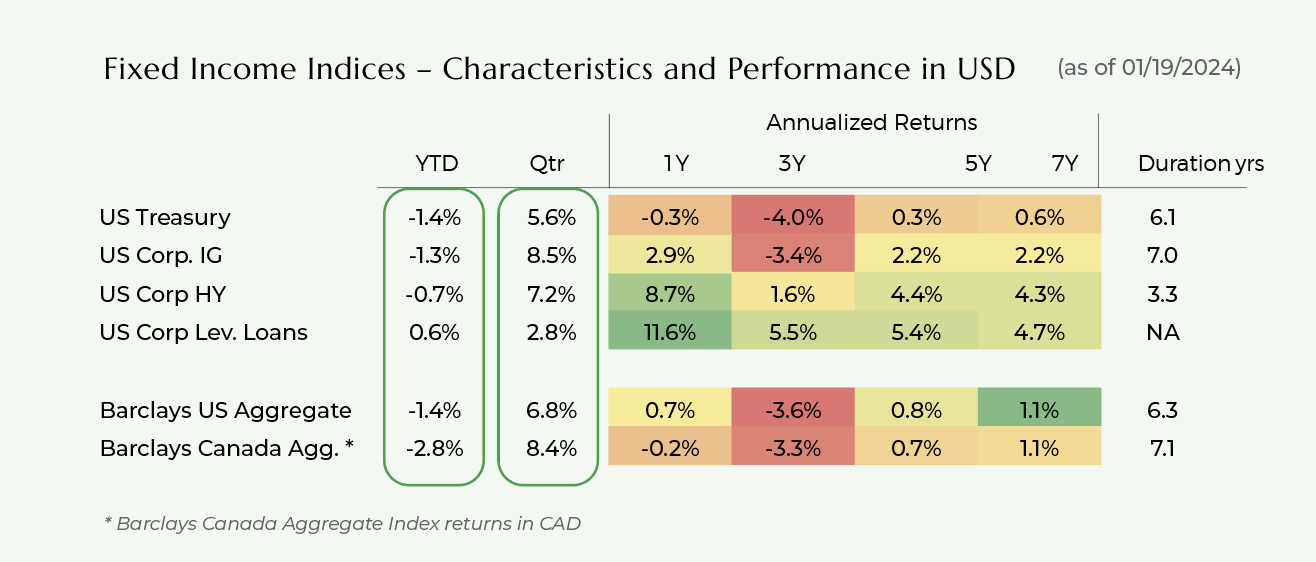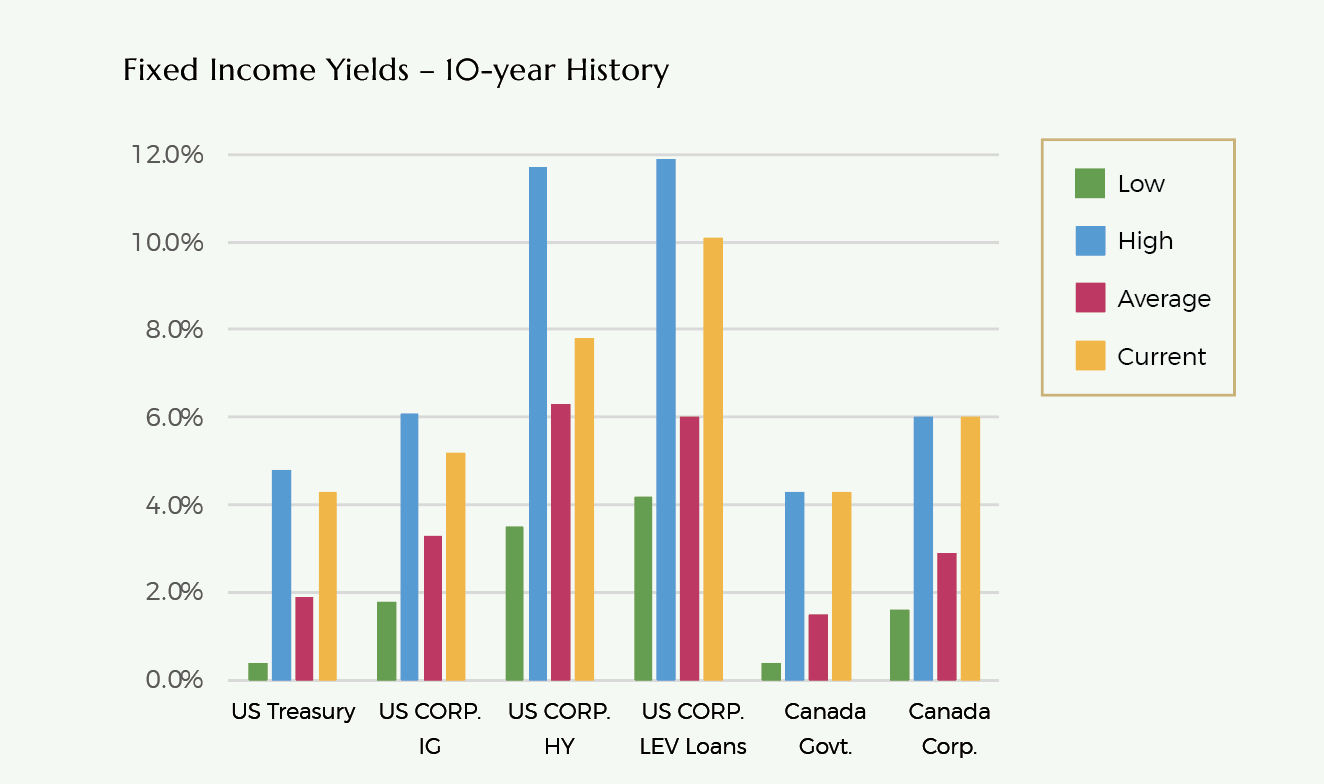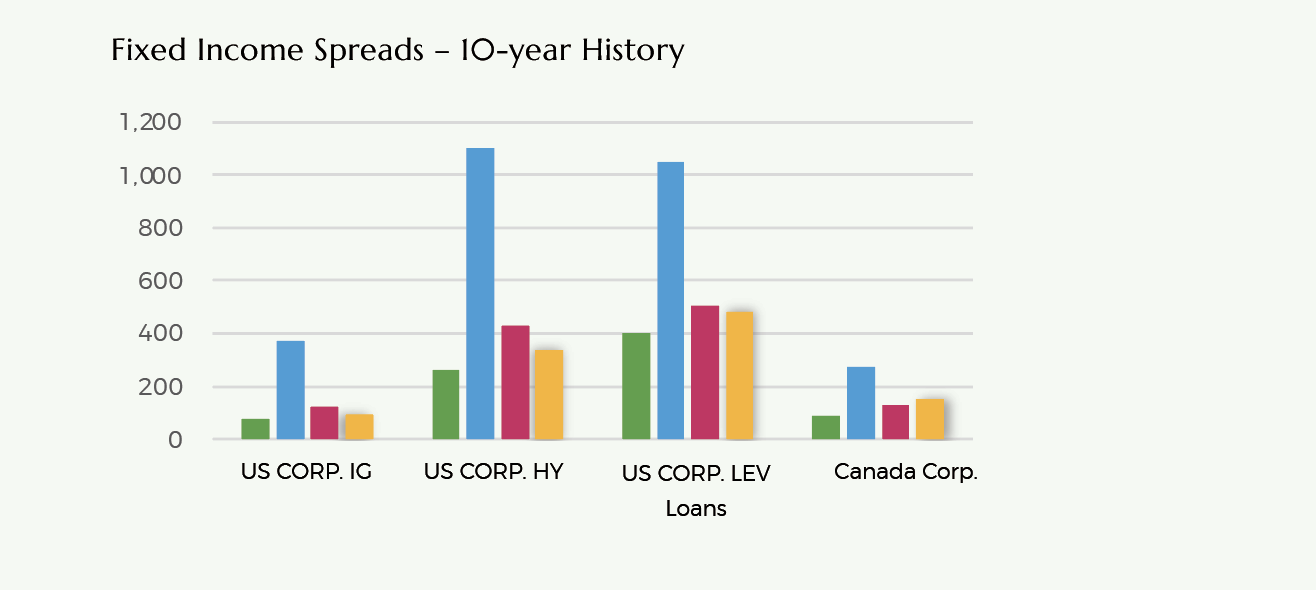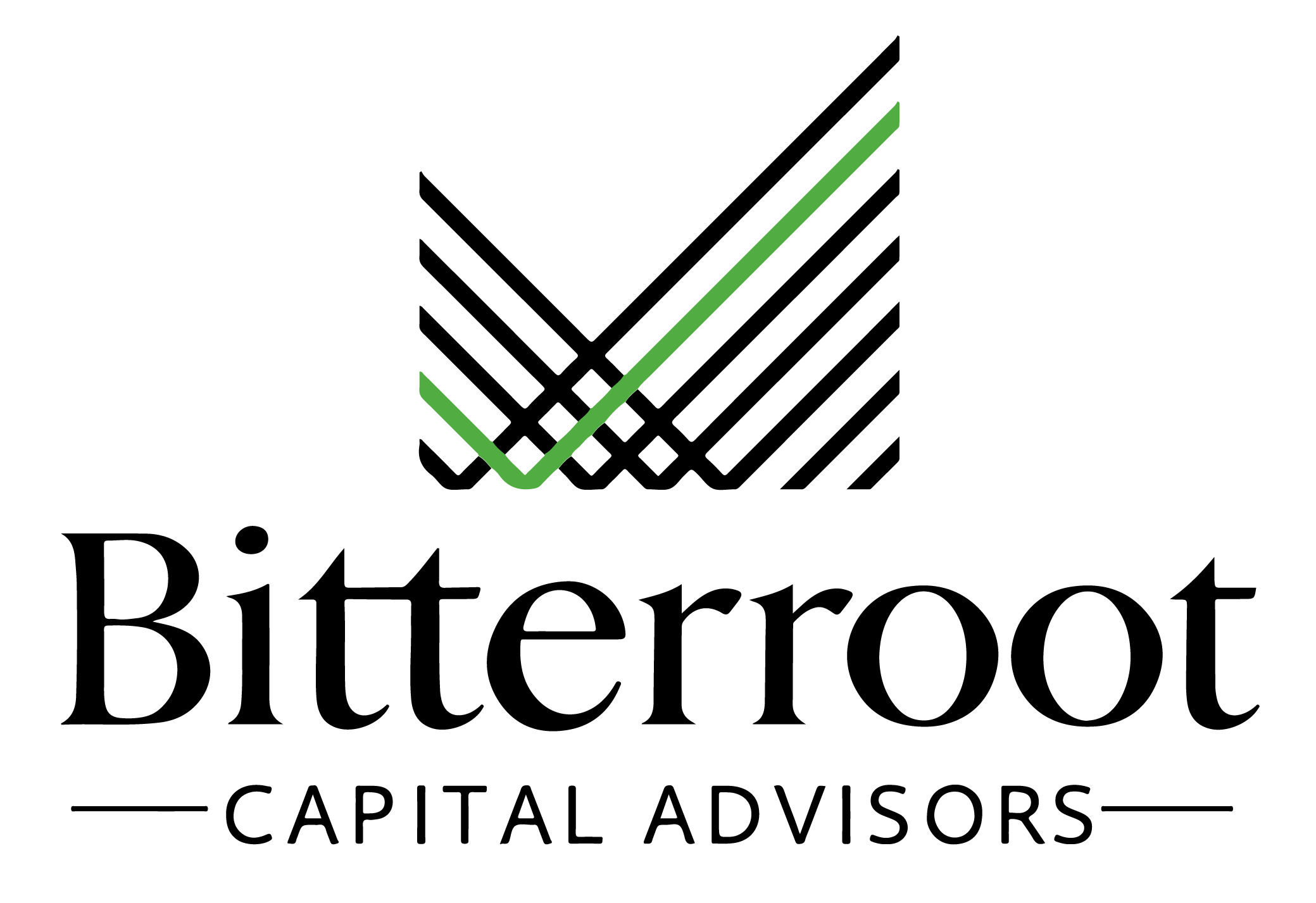Performance
Safe fixed income (government bonds and corporate investment grade bonds) appreciated significantly during Q4 as interest rates sharply declined.
Yields declined across the US Treasury yield curve by roughly 70bbps-80bps during the quarter. Thus far in 2024, yields have risen 10bps to 20bps across various maturities.
The sharp decline in yields was largely driven by highly favorable inflation data with inflation falling much faster than expected. Employment markets also showed signs of slowing with job growth concentrated in certain areas (government and healthcare services) rather than broad-based.
Both high yield bonds and leveraged loans appreciated strongly in Q4 and in full-year 2023.
HY bonds have benefitted sharply from declining interest rates in Q4. Additionally, high coupon rates coupled with spread tightening also drove strong performance.
CCC-rated (the riskiest) high-yield bonds performed best in 2023 (+20.4%) despite bankruptcy filings reaching the highest levels since the GFC.
Leveraged loans have benefitted from high coupon rates (driven by increases in the SOFR base rate) and from spread tightening.

Valuation
Safe fixed income (government bonds and investment grade corporate bonds) yields remain at attractive levels, albeit well lower than early October 2023 peak yield levels.
US Treasuries are yielding roughly 4.8%, 4.4% and 4.1% for 1-year, 2-year, and 10-year maturities.
US corporate investment grade bonds are now yielding 5.2% (with risk of default very low).
Both investment grade and high-yield bond spreads have compressed significantly over the past several months.
IG spreads are presently at 95bps (versus 141bps at YE 2022) and HY spreads are at 338bps (versus 469bps at YE 2022). These levels are well lower than 10-year averages of 125bps and 425bps respectively.
Spreads have generally widened further during prior recessionary periods (200bps for corporate bonds and 800bps for HY bonds).
However, the quality of the high yield index is much stronger now than in previous periods. When coupled with today’s high base rates, it is unlikely that spreads will widen to those experienced in previous recessions (even if economic activity slows substantially).
Underlying borrower financial performance has been mixed.
Signs of credit stress are emerging with default rates increasing (off low base levels) and corporate bankruptcy filings reaching levels not seen since the GFC.
S&P expects defaults rates to increase to 5.0% by September 2024 versus 4.1% in September 2023.
On the other hand, an index of middle market privately-held companies reported 16% YOY EBITDA growth in Q4 2023 (the highest quarterly YOY growth experienced during 2023).



